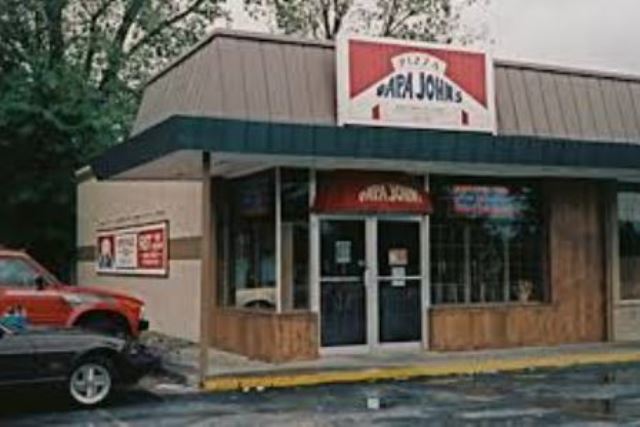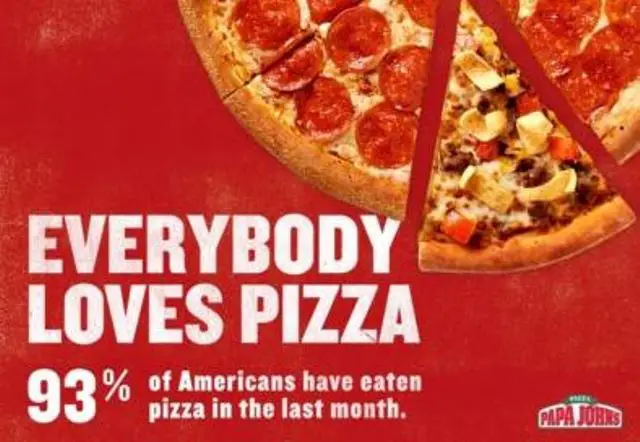The Papa John’s restaurant was founded in 1984 when “Papa” John Schnatter knocked out a broom closet in the back of his father’s tavern, Mick’s Lounge, in Jeffersonville, Indiana. He then sold his 1971 Camaro Z28 to purchase $1,600 worth of used pizza equipment and began selling pizzas to the tavern’s customers out of the converted closet.
In less than 10 years, Papa John’s had gone public in 1993 with nearly 500 stores and had tripled that to 1,500 stores within four years!

Today, Papa John’s is the fourth largest pizza franchise in the US behind Domino’s, Pizza Hut, and Little Caesar’s and has over 5,000 locations with franchising driving a majority of those stores.
So you love pizza? How much dough is it going to take to get into a Papa John’s franchise? We reviewed the Papa John’s Financial Disclosure Document and found that the average initial investment for a Papa John’s ranges from $115,120 to $794,420, including an initial franchise fee of $25,000.
How Much Money can you Make as a Papa John’s Franchisee?
So you have decided to drop your hard earned money on a Papa John’s and you are wondering how much money you can expect to make. Let’s say that your store costs $350,000 to build (likely closer to average than at the high or low end of the range). Average sales for a franchised store were $908,145 and pre-tax cash flow is estimated at 12%. That equates to earnings / profits of $108,000 in profits per location before accounting for above store general and administrative costs.
Is that $108,000 return a good return? Well, $108,000 on a $350,000 equates to a 31% return. If that 31% is better than you can earn elsewhere then this may be a good investment to evaluate. Pizza concepts tend to have lower investments and higher returns than other restaurant investments.
Check out the Domino’s franchise cost here.
Check out Pizza Hut Franchise cost here.
Papa John’s Estimated Initial Investment Costs
The average Papa John’s likely costs between $300,000 – $400,000, and below is a breakdown of the estimated initial investment:
- Initial Franchise Fee: $0 to $25,000
- Real Estate Brokerage Fees: $0 to $10,000
- Professional Fees: $500 to $12,000
- Construction/Leasehold: $50,000 to $500,000
- Furniture, Fixtures, and Equipment: $30,000 to $120,000
- Information System: $20,000 to $30,000
- On-Site Support Fee: $0 to $2,500
- On-Site Installation fee: $0 to $5,000
- Help Desk Service Fee: $0 to $1,000
- Software Enhancement Fee: $420
- Signage: $3,000 to $20,000
- First Month’s Rent: $1,200 to $5,000
- Security Deposit: $500 to $8,500
- Opening Inventory and Supplies: $3,000 to $10,000
- Grand Opening Advertising: $3,000 to $10,000
- Training Expenses: $1,000 to $15,000
- Miscellaneous Opening Costs: $2,500 to $20,000
- Total Estimated Initial Investment: $115,120 to $794,420
Papa John’s Net Worth Requirement
Maybe you can find the money to build a new Papa John’s, but along with that Papa John’s is also going to check out your net worth. The current net worth requirement to become a Papa John’s franchisee is a liquidity requirement of $75,000 with net worth of $250,000 and an ability to obtain financing of up to $275,000.
Royalties, Advertising and Other Ongoing Costs
Royalties and Advertising rates are the most common ongoing costs for a franchise. At pizza concepts these tend to be higher than normal driven by large national advertising budgets. Papa John’s is no different with over 10% of sales spent on advertising costs. Other ongoing expenses include:
- Royalty: 5% of Net Sales; 6% for Small Town Non-Traditional Restaurants
- On-line transaction fee: 1.5% of Net Sales via Internet
- Marketing Fund: Max up to 3% of net sales unless higher amount approved by 2/3 majority of vote of members; headed to 5% effective 2019
- Papa Card Transaction and IVR fees: 2% of Papa Card redemption transactions
- Cooperative Contributions: Minimum – 2% of Net Sales; cannot exceed 7% less the then current Marketing Fund Contribution
- Local Advertising: Minimum – 8% of Net Sales, less amounts contributed to Marketing Fund and Cooperative
Profitability Breakdown
The company also breaks out an example of a store-level income statement. Here is how the average restaurant P&L breaks down according to the FDD:
- Food Cost: $363,600: 30.5% of sales
- Labor and Taxes: $259,458: 21.8%
- Manager’s Labor and Taxes: $48,653: 4.1%
- Mileage: $46,409: 3.9%
- Advertising: $106,248: 8.9%
- Controllables: $79,155: 6.7%
- Rent and CAM: $37,107: 3.1%
- Other Non-Conrollables: $69,241: 5.8%
- Training Costs: $5,116: 0.4%
- Store Bonuses: $15,247: 1.3%
- Pre-tax Cash Flow: $159,978: 13.4%

